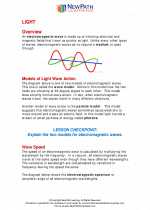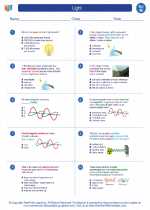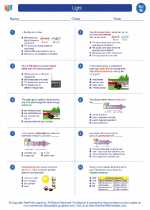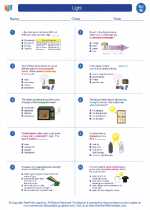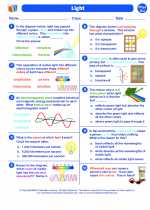Frequency
Frequency is a fundamental concept in science and physics. It is a measurement of how often a particular event or cycle occurs within a specific time period. In the context of waves, frequency refers to the number of complete oscillations or cycles of a wave that occur in one second. It is commonly measured in hertz (Hz), where 1 Hz is equal to one cycle per second.
Key Points to Remember:
- Frequency is the number of cycles of a wave that occur in one second.
- The unit of frequency is hertz (Hz).
- Higher frequency waves have shorter wavelengths and carry more energy, while lower frequency waves have longer wavelengths and carry less energy.
- Frequency is inversely proportional to the period of a wave (the time it takes for one complete cycle to occur).
Formulas and Equations:
Frequency (f) can be calculated using the formula:
center;">f = 1 / T
Where f is the frequency in hertz and T is the period of the wave in seconds.
Examples of Frequency in Everyday Life:
- The frequency of a vibrating guitar string determines the pitch of the sound it produces. Higher frequency vibrations produce higher pitch sounds.
- Radio and TV stations broadcast at specific frequencies on the electromagnetic spectrum, allowing your devices to tune in to different channels.
- The frequency of visible light waves determines the colors we perceive, with higher frequencies corresponding to bluer colors and lower frequencies corresponding to redder colors.
Study Tips:
- Understand the relationship between frequency and wavelength, as well as how they relate to the energy of a wave.
- Practice converting between different units of frequency, such as hertz, kilohertz, and megahertz.
- Work on problems that involve calculating frequency using the period of a wave.
- Explore real-world examples of frequency, such as music, electromagnetic waves, and communication technologies.
By mastering the concept of frequency, you will develop a deeper understanding of various natural phenomena and technological applications that rely on wave behavior.
